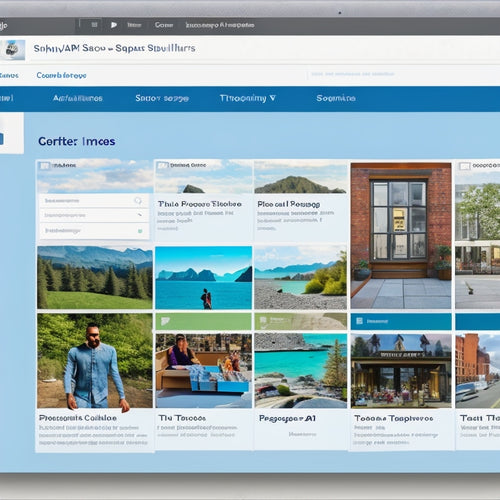
Borderless Commerce: Strategies for Global Market Success
Share
To succeed in borderless commerce, you need to establish the right team, infrastructure, and technology. Conduct thorough market research to understand local preferences and market trends. A cultural adaptation strategy will help you tailor your brand messaging and products to resonate with diverse audiences. Focus on exceptional customer experience, and implement a thorough global selling strategy to increase sales and revenue growth. As you prepare to enter new markets, remember that merchandising products that resonate with local consumers is pivotal. By adapting your approach to each market, you'll set yourself up for success - and that's just the beginning of your borderless commerce journey.
Key Takeaways
• Establish a strong team, infrastructure, and technology to support global commerce and enhance customer trust.
• Conduct thorough market research to understand local preferences and tailor brand messaging and products.
• Implement a cultural adaptation strategy to resonate with diverse audiences and increase customer loyalty.
• Invest in technology that streamlines cross-border operations, enhances customer experiences, and drives business growth.
• Foster emotional consumer connections through nuanced marketing strategies that consider regional cultural nuances.
Building Blocks for Global Success
To establish a strong foundation for borderless commerce, you'll need to assemble the right team, infrastructure, and technology, ensuring that your brand's global ambitions are supported by a robust set of building blocks.
Conducting thorough market research is pivotal to understanding local preferences, consumer behavior, and market trends. This research will inform your cultural adaptation strategy, allowing you to tailor your brand's messaging, products, and services to resonate with diverse international audiences. By doing so, you'll be able to navigate cultural nuances, avoid misunderstandings, and build trust with your global customers.
A well-planned infrastructure and technology will also enable you to efficiently manage logistics, compliance, and customer support, providing a seamless shopping experience across borders.
Mid-Market Strategies Uncovered
As you scale your mid-market business across borders, focusing on exceptional customer experience becomes essential, requiring you to hire creative, customer-centric talent and tailor your brand's messaging, products, and services to resonate with diverse international audiences. To achieve this, consider the following strategies:
| Strategy | Description | Benefits |
| Customer Experience | Hire customer-centric talent, tailor messaging, products, and services | Increased customer loyalty and retention |
| Market Localization | Adapt creative assets, customer service, payment, and shipping methods | Enhanced customer satisfaction and trust |
| Ecommerce360 Strategy | Implement a thorough strategy for global selling | Increased sales and revenue growth |
Merchandising for Global Markets
When expanding into new markets, you must merchandise products that resonate with local consumers, taking into account climate, competition, trends, and cultural differences that shape their purchasing decisions.
Cultural adaptation is pivotal to success, as it allows you to tailor your products to meet the unique needs and preferences of each market.
By staying on top of market trends, you can identify opportunities to innovate and differentiate your products.
Product localization is also essential, as it enables you to adapt your offerings to suit local tastes and preferences.
Understanding consumer behavior is vital to developing effective merchandising strategies that drive sales and customer loyalty.
Technology as a Growth Catalyst
By harnessing the power of technology, you can streamline cross-border operations, enhance customer experiences, and drive business growth in new markets. As you set out on global expansion, tech innovation becomes a critical component of your strategy.
By automating email marketing workflows and investing in a Product Information Management system, you can efficiently manage your product catalog and reduce errors. Connecting channels for strategic planning and utilizing ERP systems for order processing also enables you to scale seamlessly.
Make strategic technology investments in-country, and validate your decisions with analytics and market insights. By leveraging technology, you can remain lean, drive innovation, and make data-driven decisions that propel your business forward in new markets.
Scaling for Enterprise Success
You're now poised to take your cross-border commerce strategy to the next level, where scaling for enterprise success requires a nuanced understanding of the complexities involved in managing a global footprint.
As you expand, it's pivotal to provide enterprise autonomy to in-market teams, allowing them to make data-driven decisions tailored to local markets.
Invest in marketing efforts that foster an emotional consumer connection, understanding that cultural nuances vary across regions.
Strategic technology investments will also be key, enabling you to connect with consumers on a deeper level.
Frequently Asked Questions
How Do I Handle Currency Exchange Rates and Conversion Fees?
You'll need to develop a risk management plan to mitigate currency exchange rate fluctuations, and consider pricing strategies that absorb conversion fees; meanwhile, prioritize customer experience by offering diverse payment methods that cater to local preferences.
What Are the Best Practices for Managing Global Inventory Levels?
You'll need to master demand forecasting and inventory optimization to manage global inventory levels effectively. Optimize your supply chain efficiency and order fulfillment processes to guarantee seamless delivery, minimizing stockouts and overstocking risks.
Can I Use a Single Logistics Provider for All International Shipments?
As you weigh the convenience of a single logistics provider, ask yourself: can you really put all your eggs in one basket? Consider split shipments and regional carriers for a more tailored, culturally-sensitive approach that prioritizes safety and flexibility.
How Do I Ensure Compliance With International Consumer Protection Laws?
You guarantee compliance with international consumer protection laws by prioritizing data security for online transactions, understanding cultural differences, and meeting customer expectations, thereby building trust and confidence with global consumers.
What Is the Ideal Ratio of Local to Global Marketing Strategies?
You'll need to strike a balance between global branding and local messaging, achieving cultural customization while maintaining global reach; aim for a 60:40 ratio, prioritizing local nuances while preserving your brand's essence.
Related Posts
-

What Aspect Ratio Are Shopify Videos
This article investigates the aspect ratio used in Shopify videos. It explores the benefits of selecting an appropri...
-

How Do I Set up A Tracking Page on Shopify
This article aims to provide a comprehensive guide on setting up a tracking page on the Shopify platform. It explore...
-

Abandoned Cart Apps Target Potential Lost Sales by Reminding Customers Who Left Items in Their Carts. Examples Include Cart Recovery Email Reminders, Exit-Intent Pop-Ups, and SMS Reminders for Cart Items.
Are you tired of losing potential sales from customers who abandon their shopping carts? Abandoned cart apps are her...


